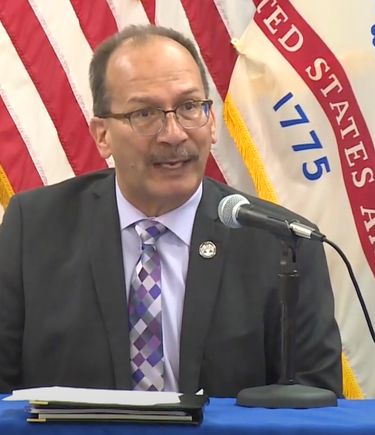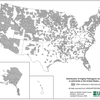College leaders outline ‘prudent’ plans to contain COVID-19 while reopening campuses in August
ALBANY COUNTY — Leaders of colleges in Albany County are aware that, with an influx of students in August, residents have concerns about the spread of COVID-19.
At Thursday’s county press briefing, where two new deaths from the disease were announced, Christopher Gibson, president of Siena College, expressed his condolences to the families and pledged to them “and all the residents of Albany County that we understand how serious this moment is and how important it is that we are prudent” with planning and meticulous execution of plans.
Gibson said that, while Albany County has done well controlling spread of the virus, there are concerns with a recent uptick.
By Thursday, 33 cases of COVID-19 had been linked to a Fourth of July weekend party on Hudson Avenue in Albany attended by about 200 college-age people who weren’t wearing masks or staying six feet from each other (see related story).
Governor Andrew Cuomo, in his press briefing on Thursday, remarked on the cases from the Albany party and said one bad event can be a real problem.
He also said that the state is monitoring the threat of rising COVID rates among younger people.
In Albany County, the 20-to-29 age group leads all other age groups in the number of COVID-19 cases.
Albany County Executive Daniel McCoy has repeatedly warned that people in this age group are often infected without showing symptoms and so, unless they get tested, can unwittingly spread it to others for whom the disease may be serious or even fatal.
Cuomo said on Thursday, “You look at the age brackets; it’s basically flat or down except for one group: 21 to 30 yeas old. And it has picked up four points; that is a significant increase in a short period of time and we know why.”
In Albany County, the 20-to-29 age group leads all others for cases of coronavirus disease 2019.
Cuomo went on, “You get groups of young people; it’s warm, they’ve been locked up for a long time, we like to socialize — I get it. You don’t socially distance; you don’t wear masks, the virus spreads and it is happening.”
The governor hyperbolically said he would enshrine the right to party into state law. “You have the right to party but let’s be smart about it, right?” said Cuomo. “There is an attitude that young people are immune. You are not: 21 to 30, the virus can kill you and, if it doesn’t kill you, you can bring it home and give it to someone inadvertently and it can kill them.”
Against this backdrop, Gibson and Havidán Rodríguez, president of the University at Albany, presented their plans for reopening.
Both schools are starting classes on Aug. 24 — a combination of in-person and remote learning — and will end the fall semester with the Thanksgiving break. Both schools are having students sign pledges that they will abide by protocols, and they must arrive on campus with the results of a negative COVID-19 test in hand.
“March 13 of 2020, the lives of our faculty and staff and students was turned upside down when we had to go basically overnight to remote education,” said Rodríguez.
A University of Albany student had one of the first two cases in the county, announced on March 12. Students were sent home shortly thereafter.
The public university, part of a sprawling state system, has three campuses serving about 18,000 students: an uptown campus in Albany and Guilderland, where free state testing for COVID-19 has been ongoing for months; a downtown campus in Albany; and a health sciences campus in Rensselaer.
The university set up a COVID-19 task force, made up of faculty, staff, and students. “I’m extremely proud of all the work that they have done to ensure two things: Number one, that provide for the health and safety of our campus community and, number two, that we provide our students an excellent education,” said Rodríguez.
UAlbany’s plan for reopening has been approved by SUNY, Rodríguez said.
A tenth of UAlbany students are from other countries, he said.
Students arriving at the university from states on New York’s travel-advisory list or from countries determined by the Centers for Disease Control and Prevention to be Level 3 — the top and most stringent category — will have to quarantine for 14 days after arriving in New York.
In-state students are to complete a 14-day quarantine before arriving at the UAlbany campus. Students who live on campus and need to be isolated or quarantined will be asked to return to their permanent homes until they are safe to come back to the campus, according to UAlbany regulations.
Density will be reduced in all public spaces, including classrooms, campus centers, and residential halls, said Rodríguez.
About 57 percent of classes will be fully remote, 28 percent will be in-person, and 15 percent will have both remote and in-person instruction, said Rodríguez.
Students will learn in reduced-capacity classrooms while, at the same time, there will be fewer staff members on campus.
“We’re following the state’s telecommunith policies to reduce the number of employees on campus,” said Rodríguez.
The university is prepared to “pivot back to a fully-remote model if needed,” said Rodríguez.
Students have been given a guide to health and safety protocols; and faculty members, too, have a guide.
While health and safety is of paramount importance, Rodríguez said, “At the end of the day, we also want to provide a truly excellent education to our students.”
Gibson said Siena — a private Franciscan liberal-arts college in Latham with about 3,000 students — is managing risk along two different axes: an academic track and a residential-life track.
He recently talked to students in a Zoom town hall meeting and each was sent an electronic pledge to sign. International students and students coming from states with high rates of COVID-19 infections will quarantine for two weeks on arrival to campus, Gibson said.
Arrivals will be phased in with classes starting on Aug. 24 — some will meet in-person and others will be conducted remotely.
“We have a 100-percent screening when the students come back to campus,” said Gibson. And, with regular screenings and temperature checks, if an infection shows up in students, he said, “They may have to go back home.” He noted that county governments are responsible for tracking the disease.
“Deep cleaning” is also part of the plan, he said; for example, dining areas will be cleaned three times a day. A lot of students are expected to eat take-out meals so picnic benches and tents will be set up for them to dine.
“We’ve de-densified the academic track and residential life,” said Gibson. The school has also come up with contingency plans.
He called Siena’s approach “a smart, safe plan to reopen campus.”


